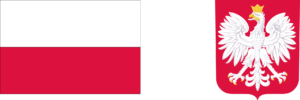The 2025 farming season in Belarus marked a year of cautious optimism and steady progress in the country’s agricultural sector. Beginning with ambitious planting targets, Belarusian farmers and state enterprises entered the year under a comprehensive national programme designed to strengthen food security, modernize production, and ensure the country’s self-sufficiency in key crops and livestock. According to the Ministry of Agriculture and Food, winter sowings covered around 1.9 million hectares, including approximately 1.5 million hectares of winter cereals and more than 400,000 hectares of winter rapeseed. Spring planting expanded this base, with over 600,000 hectares of early-spring crops, 330,000 hectares of grain maize, 900,000 hectares of fodder crops, and around 150,000 hectares dedicated to sugar beet and flax.
Seed availability remained one of the stronger aspects of the 2025 season. Domestic production covered about 71 percent of the demand for grain crop seeds, while flax seeds came almost entirely from Belarusian breeders. The government reported that seed potato stocks were sufficient, and only a small quantity of imported seeds—around 7,000 tonnes—was required to fill the remaining gaps. These numbers illustrated the country’s ongoing push toward agricultural self-reliance and technological sovereignty in seed development and selection.
Harvest expectations were set high. The authorities aimed for a total grain harvest of around 11 million tonnes, including rapeseed, with a sugar-beet target of approximately 5.1 million tonnes. As the season progressed, early output data suggested moderate but tangible growth. Between January and August 2025, Belarusian agricultural enterprises produced goods worth 21 billion Belarusian rubles, a 2.3 percent increase year-on-year in comparable prices. Livestock numbers remained stable, with around 4 million head of cattle, including 1.4 million dairy cows, and about 2 million pigs. The steady performance of the livestock sector helped balance the country’s overall agricultural productivity and export potential.
Structurally, agriculture continues to play a central role in Belarus’s economy, combining large-scale state farms, private peasant holdings, and household plots. The sector remains guided by the state programme “Agrarian Business 2021–2025,” which prioritizes crop and seed production, mechanization, livestock efficiency, and land amelioration. Despite the solid framework, the year also revealed certain challenges. While agricultural enterprises reported growth, total production across all types of farms was slightly lower than the previous year—99.7 percent of the 2024 level. Delays in fodder and grass-cutting operations were noted, potentially affecting livestock feed supplies and future productivity.
The modest gains of 2025 reflected both the resilience and the limitations of Belarusian agriculture. On one hand, farmers demonstrated discipline and effective organization under difficult conditions marked by fluctuating input costs, logistical pressures, and the impact of sanctions on agricultural exports and fertilizers. On the other hand, the pace of modernization and efficiency improvements remains gradual, constrained by equipment aging, limited foreign investment, and the challenges of maintaining productivity within the large, state-dominated agricultural complexes that define the Belarusian countryside.
Nevertheless, the government’s focus on stable output, seed self-sufficiency, and mechanization ensured that Belarus maintained its status as one of the region’s reliable food producers. The continued balance between crop and livestock production helped mitigate the effects of adverse weather and market volatility. Achieving or approaching the 11-million-tonne grain harvest target would confirm the sector’s solid performance and contribute to domestic food security as well as export stability.
In conclusion, the 2025 farming season in Belarus can be seen as a year of consolidation rather than transformation. It showed that the Belarusian agricultural system, while still heavily state-directed, is capable of sustaining moderate growth and meeting domestic needs despite economic and geopolitical headwinds. With its strong focus on technological self-reliance, seed independence, and controlled modernization, Belarus remains committed to reinforcing its position as a stable agricultural power in Eastern Europe. The success of the 2025 season demonstrates not spectacular breakthroughs, but the persistence and adaptability that have long characterized Belarusian farming.






